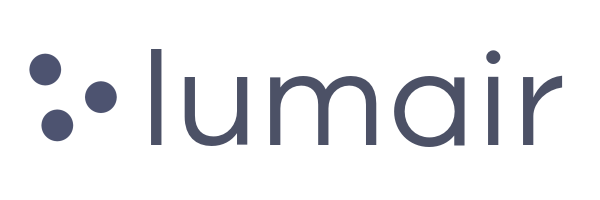Accepting insurance in private practice is not only a funding mechanism but a cornerstone of ethical, compliant care. Robust billing procedures protect patient privacy, ensure accurate reimbursement, and reduce risk of fraud or abuse. Non-compliance can expose practices to financial penalties, license sanctions, and harm to patients. Establishing clear policies, disciplined workflows, and ongoing staff training is essential for sustainable, high-quality mental health care.
This guide provides a practical, step-by-step framework for compliant insurance acceptance in private practice. It covers regulatory requirements and standards, implementation steps and best practices, documentation and record-keeping, training and staff education, monitoring and audits, consequences of non-compliance, and resources to stay current with changes in the landscape.
Regulatory requirements and standards

- HIPAA Privacy and Security Rules govern the handling of protected health information (PHI) and set baseline safeguards for electronic transactions and data security. Compliance includes patient rights, permitted disclosures, and administrative, physical, and technical safeguards. HIPAA Privacy Rule • HIPAA Security Rule
- HITECH Act strengthens HIPAA enforcement and breach notification requirements, emphasizing meaningful use of electronic health information and increased penalties for non-compliance.
- Medicare and Medicaid enrollment and billing standards require proper provider enrollment, credentialing, NPI alignment, and compliant claims submission. Refer to CMS enrollment and credentialing resources, and the National Provider Identifier (NPI) system for unique provider identification. CMS Provider Enrollment and Credentialing • NPI Registry (NPPES)
- State laws and payer policies govern credentialing timelines, billing rules, coding practices, and retention requirements. Always verify state-specific requirements and payer-specific contracts in addition to federal rules.
- Auditing and compliance guidance from federal resources helps organizations design effective programs for fraud, waste, and abuse prevention. See HHS OIG compliance guidance for providers. OIG Compliance Guidance
Implementation steps and best practices
- Assess payer mix and readiness
- Inventory which insurance plans you will accept and which patient populations you serve. Identify typical claim volumes, average reimbursements, and denial rates.
- Confirm that your EHR/billing system can handle required payer fields, eligibility checks, and electronic claim submission formats.
- Establish clear enrollment, credentialing, and participation processes
- Enroll with each payer you intend to bill; maintain an up-to-date roster of contracts and expiration dates.
- Obtain and verify NPI numbers, Tax IDs, and any required provider attestations. Maintain alignment between provider data in your practice management system and payer records.
- Create an escalation path for credentialing delays and denials.
- Design a compliant billing workflow
- Define who verifies patient eligibility prior to services, who pre-authorizes (if required), and who submits claims. Establish a handoff protocol to minimize gaps.
- Standardize assignment of benefits, patient financial responsibility, and balance-carry policies; provide written financial counseling for patients when needed.
- Implement CPT/ICD-10 coding conventions aligned with payer policies and clinical documentation.
- Set up privacy, security, and data governance
- Limit PHI access to authorized personnel and use role-based access controls. Maintain encrypted storage and secure transmission of data.
- Regularly update security software, conduct risk assessments, and train staff on phishing, safe email handling, and incident reporting.
- Develop consent, authorization, and disclosure practices
- Obtain valid authorizations for third-party billings or disclosures beyond treatment purposes, and document opt-in/opt-out preferences where applicable.
- Communicate clearly about what is covered by insurance, patient financial responsibility, and how to appeal a denial.
- Implement ongoing training and monitoring
- Provide initial and periodic training on coding accuracy, payer-specific requirements, HIPAA, and security.
- Establish performance metrics (denials by reason, days to submission, average cycle time) and regular review cycles.
Practical checklists
- Enrollment and credentialing:
- List of all payers to accept
- Evidence of enrollment completion and renewal dates
- NPI and Tax ID alignment across systems
- Billing workflow:
- Eligibility verification before services
- Pre-authorization processes documented (if required)
- Claim submission timelines and resubmission rules
- Privacy and security:
- Role-based access controls configured
- Weekly phishing awareness and monthly security updates
- Incident response plan and training
- Documentation and coding:
- Coding guidelines mapping to payer policies
- Templates for accurate progress notes that support billing
- Retention schedule aligned with state law and payer requirements
Documentation and record-keeping needs
- Clinical documentation should be complete, legible, and timely, with treatments, diagnoses, treatment plans, and progress notes that justify medical necessity for services and billing.
- Billing documentation includes encounter notes, treatment plans, progress notes, pre-authorization letters, pediatric/adult determinations, and any correspondence related to claims or denials.
- Authorization and consent forms for disclosures, as well as assignment of benefits, must be current and stored with PHI in a secure manner.
- Claims data (EOBs, remittance advice) and payer communications should be retained in a retrievable format for audit purposes.
- Retention guidance varies by state; many states require 5–7 years for health records, with longer retention for minors or after age of majority. Always verify state-specific requirements and ensure your practice management system supports the necessary retention period and secure disposal when appropriate.
Training and staff education requirements
- HIPAA training for all staff handling PHI, with annual refreshers and documentation of attendance and comprehension.
- Coding, billing, and documentation training aligned to CPT/ICD-10 conventions and payer policies; include common denial reasons and corrective actions.
- Privacy and security awareness, including data handling, device security, phishing prevention, and incident reporting protocols.
- Compliance program basics, including recognizing and reporting potential fraud, waste, or abuse (FWA) and understanding the consequences of non-compliance.
Monitoring and audit considerations
- Internal audits: conduct quarterly reviews of a sample of claims to assess coding accuracy, authorization compliance, and documentation adequacy. Track denial reasons and time-to-resolution metrics.
- Denial management: categorize denials by payer, reason, and CPT/HCPCS/ICD-10 codes; implement root-cause analyses and targeted corrective actions.
- Security and privacy monitoring: perform periodic access reviews, vulnerability scans, and incident drills; maintain an incident log for any PHI exposure or suspected breach.
- Vendor oversight: if using billing vendors or software, establish data security expectations, audit rights, and performance metrics; conduct regular reviews of vendor compliance.
Consequences of non-compliance
- Financial penalties, recoupment requests, and potential fraud investigations under the False Claims Act and related enforcement authorities.
- Suspension or exclusion from payer networks, which can significantly reduce revenue and access to patients.
- Licensure and board discipline for violations related to professional conduct or billing fraud; enforcement actions can impact credentialing and reputation.
- Reputational harm and loss of patient trust stemming from privacy breaches or billing inaccuracies.
Resources for staying current with changes
- HIPAA information and guidance for professionals (privacy and security):
HHS HIPAA for Professionals - HIPAA Privacy Rule overview and updates:
HIPAA Privacy Rule – HHS - HIPAA Security Rule guidance and resources:
HIPAA Security Rule – HHS - Medicare/Medicaid provider enrollment and credentialing (CMS):
CMS Provider Enrollment - National Provider Identifier (NPI) registry (CMS):
NPI Registry (NPPES) - OIG Compliance Guidance for individual and small health care providers:
OIG Compliance Guidance - SAMHSA – Substance Abuse and Mental Health Services Administration (policy and practice resources):
SAMHSA
To facilitate action, consider printing the practical checklists and aligning them with your practice’s standard operating procedures. Regularly review regulatory updates and payer notices, and assign a responsible staff member or team to oversee compliance, training, and audits. Keeping policies current, ensuring accurate documentation, and maintaining clear patient communications are the hallmarks of a compliant, financially sustainable private practice.

